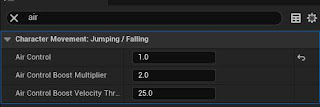Elemental Asset Integration

Author: Yashwant Patel Problem: For our water elementals (small, medium, large and boss) they all had one model. Wasn't really a model, but particle. This was fine in the prototyping phase, but for the final version of the game it would make the game feel and look bland. For players it wouldn't feel satisfying to look at the same model for different enemies and having an enemy that doesn't have animations doesn't feel great either. The change that would address all these problems would be to add models for each of the elementals, but where to find them? Solution: We scoured different 3d model sites (including UE marketplace) for free models, but this didn't work out. Then I came across a way to rip models from WoW and import them into the engine. This seemed like a great idea and the models worked pretty well with animations and our custom materials, but as the professor pointed out this would violate Blizzard's terms of usage. So we finally decide to use t...




